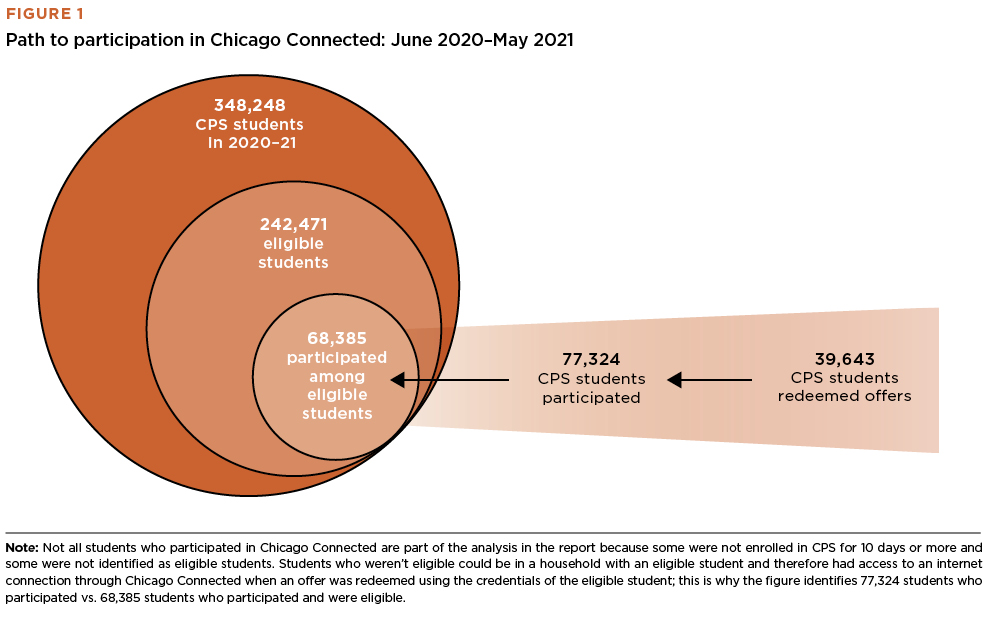1. To what extent did students eligible for Chicago Connected participate in the program?
2. What were the background characteristics of students who participated in Chicago Connected?
3. Did participation in Chicago Connected differ across schools? Were characteristics of schools related to these differences?
Internet access is increasingly considered a necessity, not a luxury, as it facilitates reading news, banking, paying taxes, learning, applying for jobs, and much more. It became evident during the COVID-19 pandemic that having internet access was vital, especially for children whose main way to continue their education was through online school.
Recognizing that not having reliable internet access was a barrier to remote learning, the City of Chicago, CPS, Kids First Chicago, philanthropic partners, community-based organizations, and internet service providers came together to launch Chicago Connected in June of 2020.
It is important to understand whether Chicago Connected helped bridge the gap of the digital divide among CPS students who did and did not have reliable internet access.
Findings from this study can help better understand the need for internet access for CPS students and where future efforts to offer free internet should be focused, to address inequities in this area. Ultimately, lessons from Chicago Connected can help guide other similar programs across the nation.
Key Findings
- 28% of eligible students participated in Chicago Connected by May 2021—68,385 of 242,471 eligible students.
- Participation rates were higher for students in households for lower economic means.
- English Learners and students with disabilities were more likely to participate in Chicago Connected—but differences in participation rates for students with disabilities was not statistically significant in our multilevel models
- There was notable variation in participation rates among schools, even among schools serving students with similar characteristics
- Participation rates were higher in schools with higher proportions of eligible students, in district-run (vs. charter) schools, and in schools with strong family engagement.

